Mobile shopping is booming, with 93% of consumers using their phones. Learn 10 key practices for e-commerce app success.
Everyone shops from their phones now. Just look at giants like Amazon, who have skyrocketed to success just by harnessing e-commerce through their mobile app. With mobile apps as key, a world of both convenience and personalized experience opens for customers. However, only a quick search in the app store can show how difficult it really is to stand out from the existing competition.
In this article, we have compiled a list of the 10 things to consider while developing a mobile e-commerce app, highlighting the key features and real-world examples through some of our own projects, to help you find both inspiration and success in the world of e-commerce.
What is the Importance of Having a Mobile App for Your Business?
Considering that most users spend their time on mobile than browsing the web, we can conclude that mobile e-commerce sells more. It is also predicted that mobile e-commerce will only increase in the upcoming years. According to a report by JP Morgan –
“Dedicated e-commerce apps are now the preferred way to do mobile online shopping, taking 54% of complete mobile commerce payments”
Let us have a look at what benefits having a mobile app brings to your business –

Higher Conversion Rates: Drive Sales Up by 10%
One significant advantage of a mobile app in e-commerce is that conversion rates here are much higher than on other platforms.
A simple psychology works behind this higher number, a customer using the mobile app is more likely to follow the user journey and make a purchase than a customer who is simply visiting the website. They explore a wider range of products, increasing the chances of making a buying decision.
Increased Customer Loyalty: Boost Your Repeat Customers
When a customer installs your mobile app, it means they are already familiar with your brand. The app further builds loyalty by keeping you at the forefront of their mind as they frequently see your app icon. This boosts their interest and engagement with your brand.
Mobile app also offers unique opportunities to be able to run loyalty programs, provide exclusive discounts, and personalize the customer’s experience through user-based push notifications. This fostered loyalty has a substantial impact on your business in terms of both sales and reputation.
Personalized Shopping Experience: Highlight Products that Matter to Your Customers
Unlike an e-commerce website, an app allows you to easily track user’s browsing and purchase history, enabling you to make tailored recommendations based on their preferences. Through push notifications, you can now effortlessly suggest new products without them even needing to visit your website. Thus by personalizing their journey, customers will find what they are looking for with ease, resulting in a delightful shopping experience and increased sales for your business!
10 Things You Should Consider
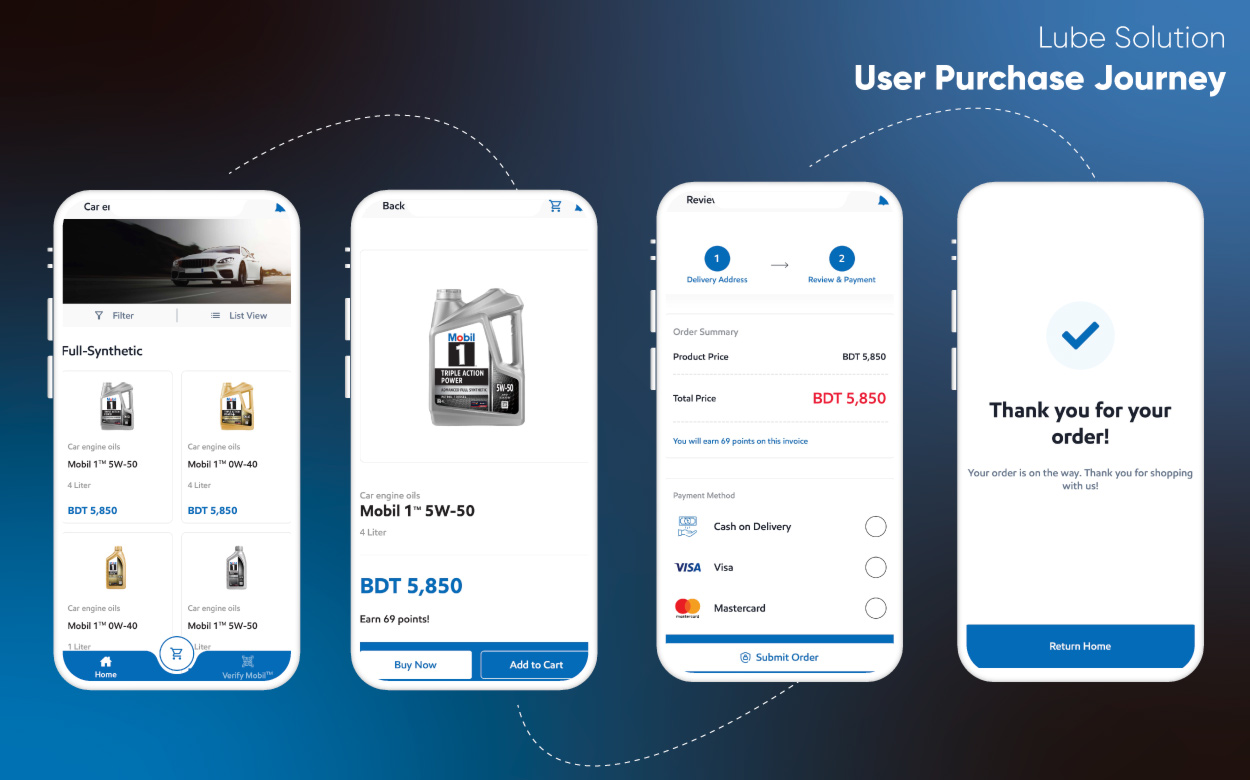
Checklist
Understand Your User’s Purchase Journey Clearly
User journey is the series of steps that represent how you want users to interact with your app. For developing the e-commerce mobile app “Lube Solution” for our client Mobil Bangladesh, we first generated a clear idea about how we want our users to interact with our app, even before we started to actually develop the app! This is particularly important for e-commerce applications as their primary purpose is to sell.
So you must map out your user’s journey to align it seamlessly with your app’s functionalities and optimize your customer’s shopping experiences.
Choosing the Right Tech Stack: Implement API Caching in Your Mobile App
In e-commerce app development, API caching is a must to ensure faster load time. This will enable a user to explore more products in less time and increase the chances of a purchase.
When a response does not change frequently, just like how a Google Maps location does not change in an Uber app after requesting a ride, caching saves a copy of the response for a certain period. This reduces the workload on servers and the overall render or load time. For e-commerce apps, this is especially helpful as a product category only changes once a day. So the API can cache the response, thus delivering it faster and more efficiently to your users. The primary goal here is to show as many products as possible in the shortest load time, thereby creating a truly remarkable user experience.
You can also use APIs in your mobile apps to connect with the backend systems. This integration allows the app to fetch product information, process payments, and update inventory (quantity, price, stock availability) in real time – providing a seamless shopping experience for your customers!

Use Scaleable Frameworks During Development Phase
For e-commerce businesses, employing scalable frameworks in app development is a smart move. Take the example of Pickaboo’s (an e-commerce platform) mobile e-commerce app, where we used the React Native framework. This framework ensured a consistent look and feel with Pickaboo’s website, which we developed using the Next.js framework. Thus we were able to maintain a similar user interface and features for Pickaboo as our users switched between the web and mobile platforms.
Flutter, another ace in our toolkit, lets us craft apps that run seamlessly on Android, iOS, and the web using just one codebase. This time-saving magic allows us to slash costs – while offering a consistent user experience at the same time.
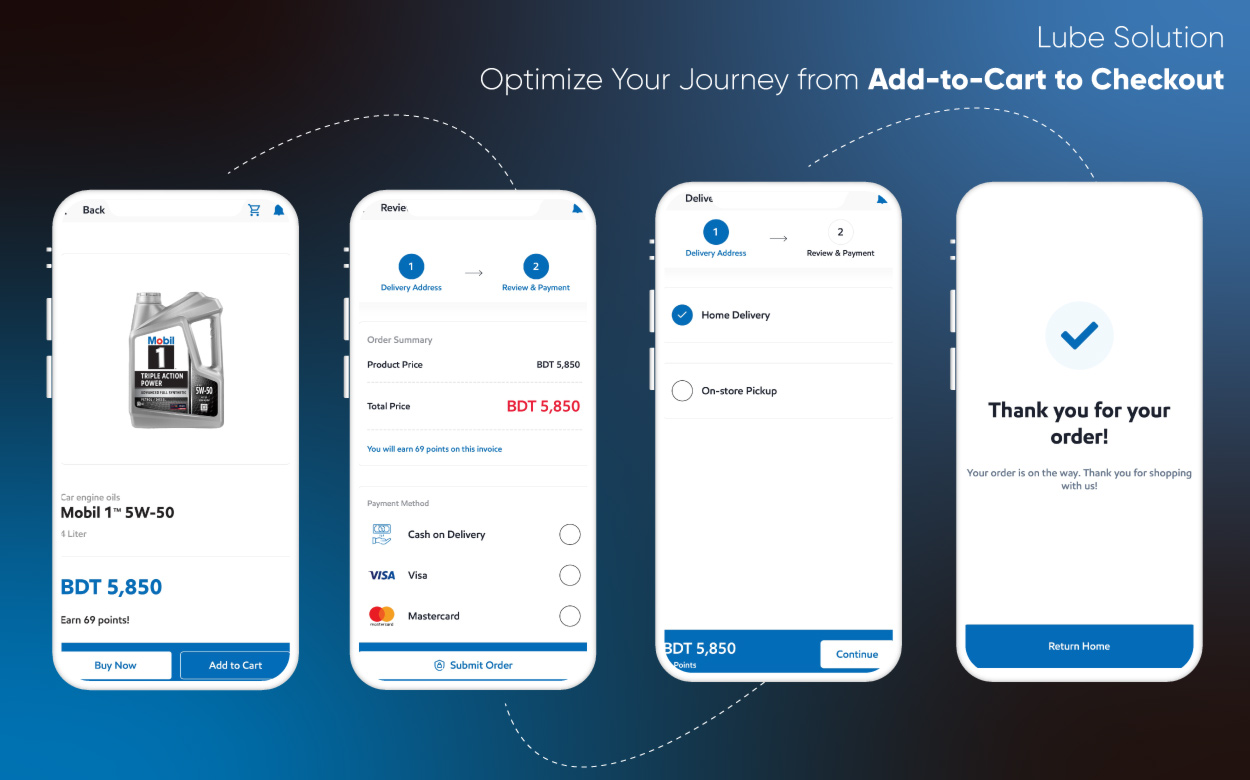
Optimize Your Journey from Add-to-Cart to Checkout
In the world of developing e-commerce mobile apps, optimizing the journey from adding items to the cart to completing the checkout process is the most crucial part. Because this is where you have the highest chance of losing your customers!
However, by ensuring a smooth transition between the cart and checkout pages, you can do quite the opposite and turn more of your visitors into customers. To achieve this, the checkout page should incorporate both shipping method and address details – all on the same page! Because this creates a frictionless path, and thus the visitors can progress steadily toward their purchase – without the need to backtrack or navigate to different pages.
The ultimate goal is to simplify the process – allowing users to effortlessly move forward, reach their desired page, and complete their purchase.
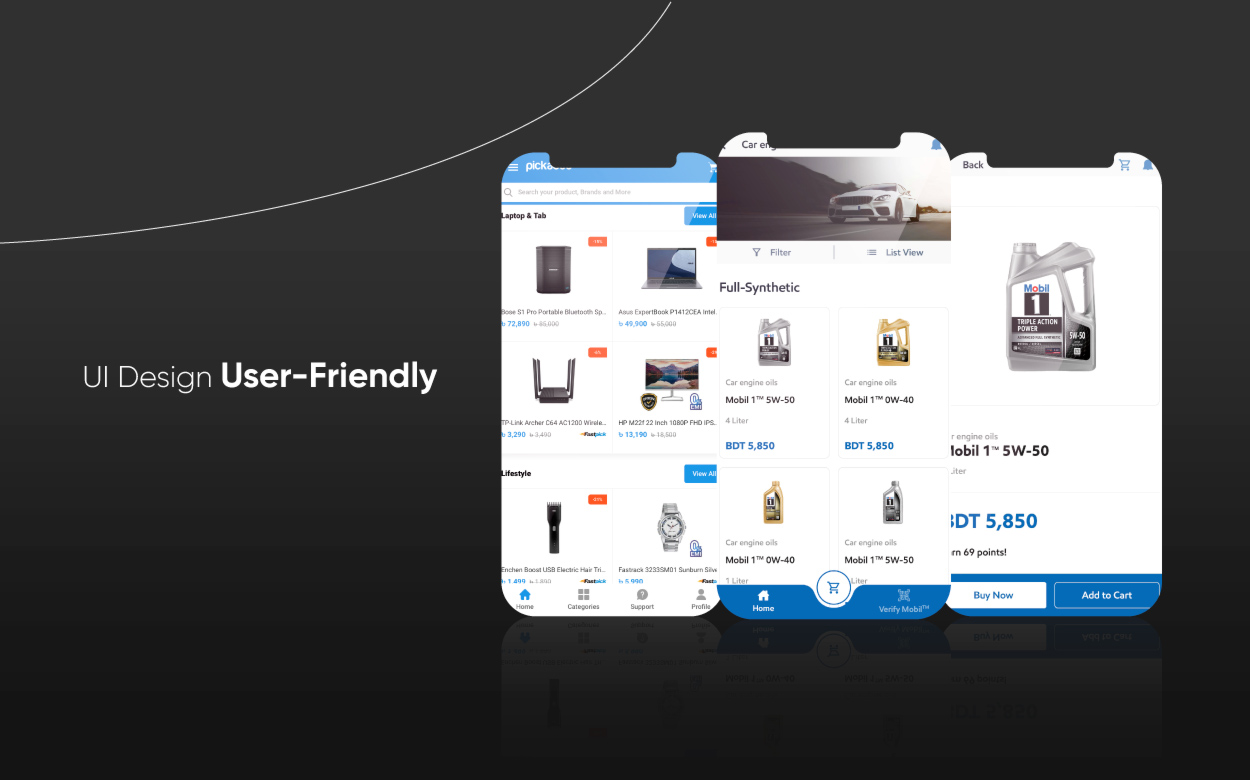
Make Your Mobile App UI Design User-Friendly
Making the UI design user-friendly is designing the interface in a way that is easy to use, understand, and navigate for all types of users. Because for e-commerce, anyone who visits the platform is a potential customer!
Just like a well-organized store layout attracts shoppers, a visually appealing and easy-to-use UI attracts and engages potential customers.
Wishlist Item: Convert Wishes into Purchases
Customers often look at different products for familiarization to make a purchase not now but a little bit later. They also evaluate all options from the same group but want to give them a comparison in order to choose the best offer. To make their experience easier, provide them an opportunity to add the product to their favorites – and convert more items from the wishlist to actual purchases!
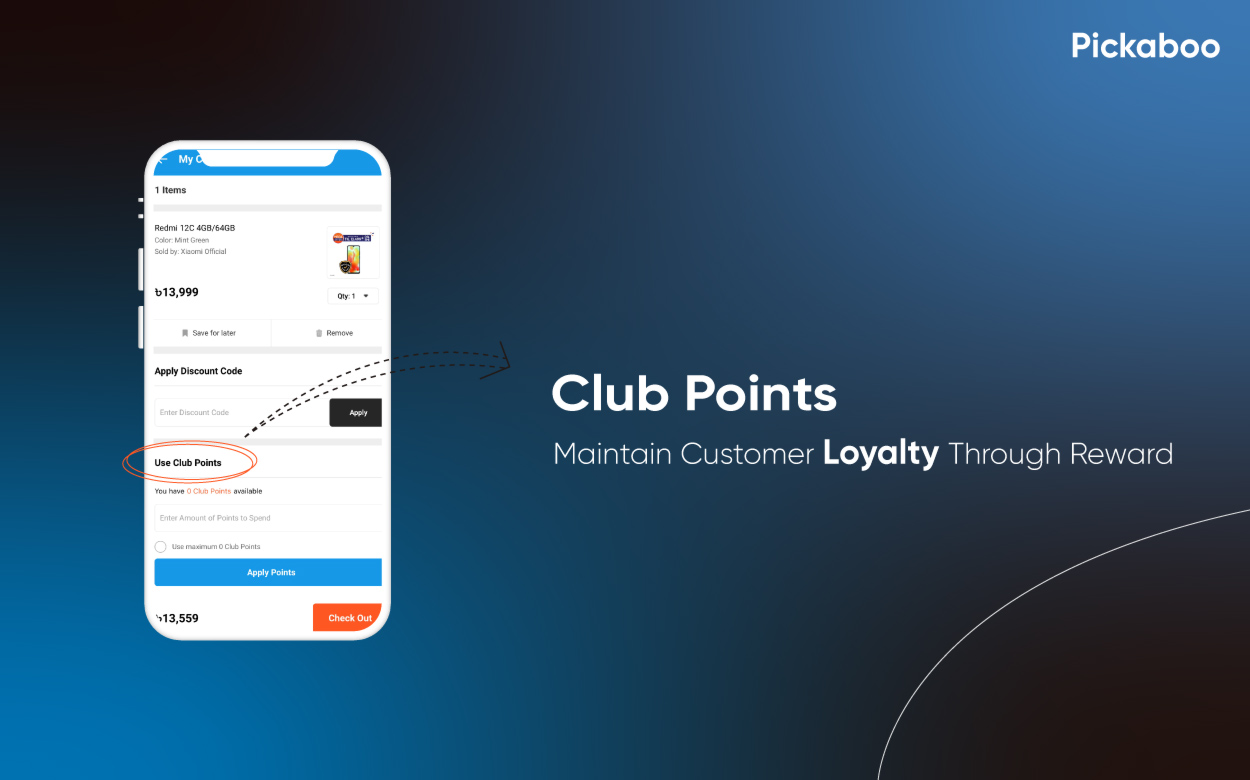
Reward Points: Maintain Customer Loyalty
Integrating reward points in the app is like offering a treasure of incentives to visitors, keeping them engaged and loyal. Customers, when earn points for their actions, feel a sense of achievement. This encourages them to stay connected to the platform, ultimately leading to increased loyalty and repeated visits.
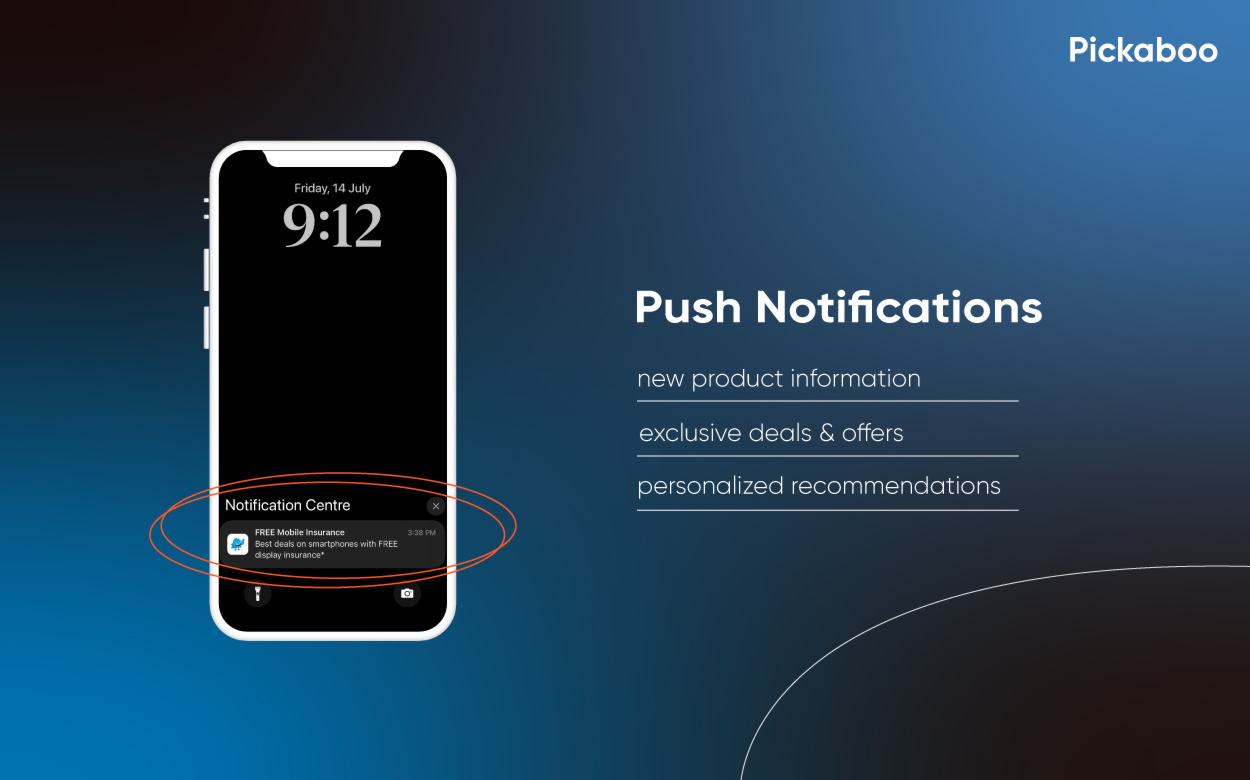
Push Notifications: Accomplish Free Marketing
Push notifications create engagement by delivering timely notifications about exclusive deals, new arrivals, and recommendations directly to your user’s mobile devices, just like a friendly tap on the shoulder. It is possible to personalize these notifications from user to user as well! For instance – Daraz’s user-based notifications push cart data to purchase with alerts like – “ [customer name], [product name] is getting popular right now, purchase it before we run out of stock!”. This simple marketing tactic leads to increased interaction and sales!
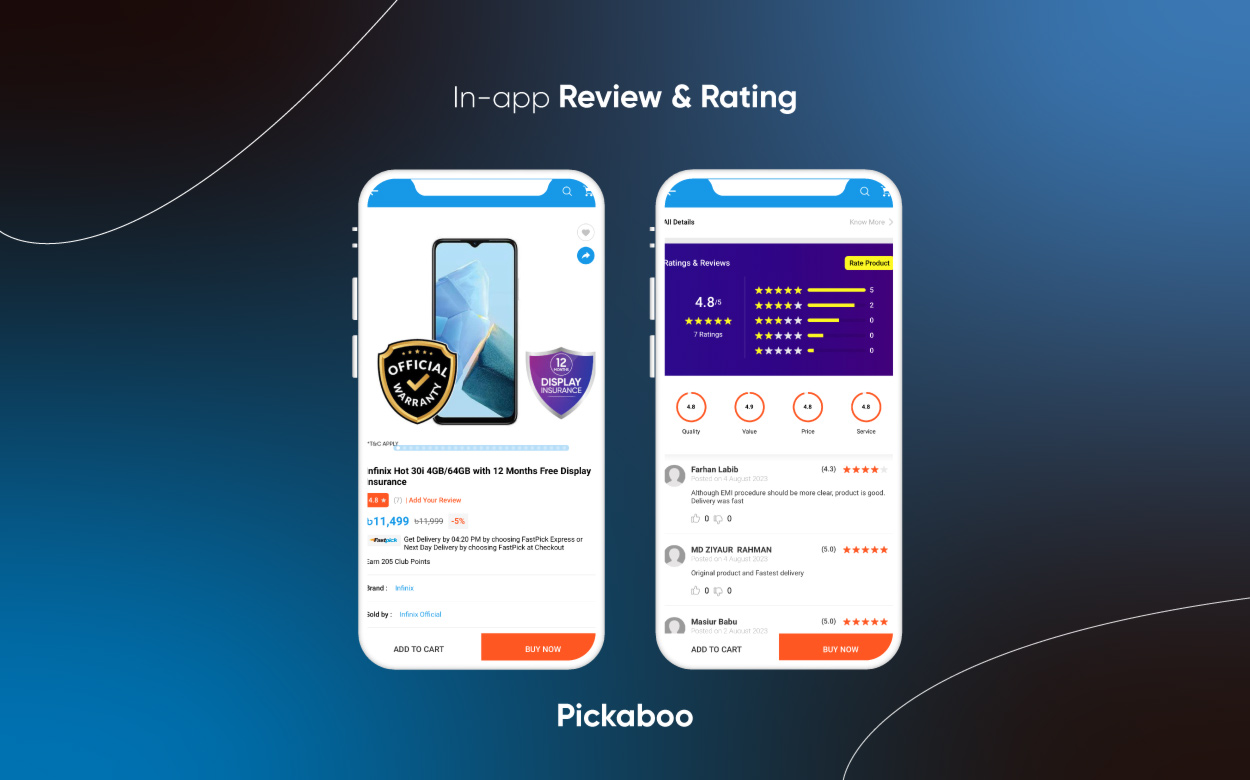
Product Reviews and Rating: Increase Your Product Credibility
Including an in-app review and rating system for each product enhances product credibility, just like a trustworthy friend’s recommendation when it comes to buying something! Customers gain confidence from others’ experiences – increasing trust in the product’s quality and the brand’s image as a whole.
Get Accurate Insights on Your Business: Use Data-Driven Tools Like Google Analytics and Meta Pixel
By utilizing data-driven tools like Google Analytics in e-commerce tracking, you can gather accurate insights about your business. It is like having a special lens that shows you the numbers and behaviors of your website visitors. With this information, you can optimize your strategies & target specific audiences, and drive up your sales!
As for Meta Pixel, just adding a small code snippet to the backend of your mobile app unlocks a world of valuable data, enabling you to measure, optimize, and create effective ad campaigns tailored to your audience’s preferences.
Whether the goal is to generate more profit or to scale up, these analytical tools undoubtedly help businesses grow faster by determining the right direction!
Summing Things Up
Now that we have established that having a mobile app actually benefits your e-commerce business, the next question that might arise is why does that mobile app need to be well-performing as well? Now this is very important. Because an efficient e-commerce app has lesser load time which leads to the user being able to view more products without getting distracted. This increases the chance of more purchases and drives up sales along with it – the ultimate goal of your business!
Frequently Asked Questions (FAQs)
Why mobile apps are better than websites for e-commerce?
A well-designed mobile app performs certain actions much quicker than a responsive website, driving higher e-commerce conversions for mobile.
What factors should you consider when choosing a development platform for e-commerce mobile apps?
Scalability, integration capabilities, development cost, and target audience’s preferred operating system – iOS, Android, or both.
Which is better mobile native app development vs cross-platform app?
Native apps excel in user experience and performance; cross-platform apps prioritize UI consistency, efficient bug maintenance, and code reusability.
How can I optimize my e-commerce mobile app for better visibility in app store?
App store optimization (ASO) strategies like optimizing app title, description, keywords, screenshots, and ratings increase visibility and organic downloads.
Why is customer service important in e-commerce mobile app?
Offering customer support within the app enhances overall user experience, leading to improved customer satisfaction.


